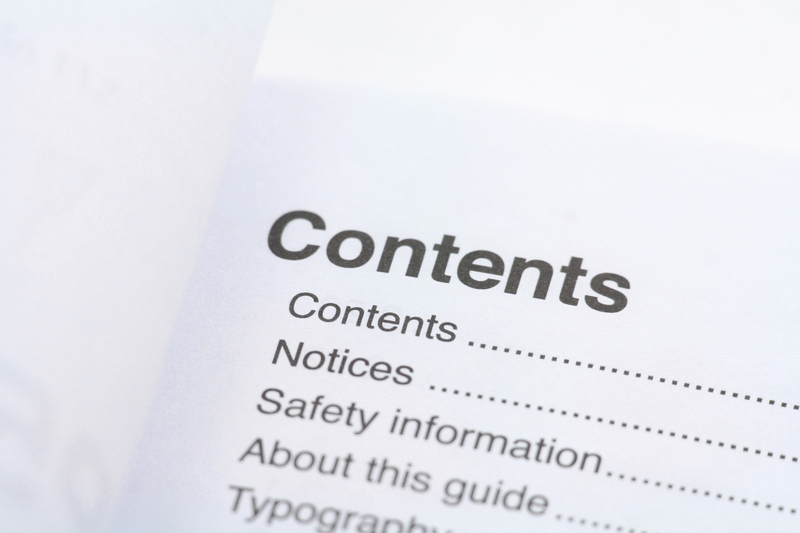Smart Strategies for Packing When Moving to a New Home
Posted on 02/06/2025
Smart Strategies for Packing When Moving to a New Home
Moving to a new home can be both exciting and overwhelming, especially when it comes to packing your belongings efficiently. Whether you are relocating across the city or embarking on a cross-country adventure, mastering the art of packing can save you time, money, and unnecessary stress. In this comprehensive guide, we'll uncover effective smart packing strategies for your move, ensuring your transition is smooth, cost-effective, and organized.
Why Smart Packing Matters When Moving to a New Home
It's no secret that one of the most daunting aspects of moving is packing up your entire life into boxes. A strategic approach to packing not only protects your possessions but also minimizes the hassle of unpacking and settling in. Employing clever packing techniques helps you:
- Prevent damage to your belongings
- Reduce moving costs by optimizing space
- Stay organized and in control throughout the move
- Make the unpacking process much easier
Ready to discover the best packing tips for moving to a new home? Let's dive in!

Step 1: Planning Your Packing Process
Create a Packing Timeline
One of the smartest moves you can make is to begin with a detailed packing timeline. The earlier you start, the less stressful the overall process. Here's how to organize your packing schedule effectively:
- 6-8 Weeks Before Moving Day: Start decluttering and organizing each room. Decide what to keep, sell, donate, or discard.
- 4 Weeks Before Moving Day: Begin packing items you don't use daily, such as seasonal clothing, books, and decor.
- 2 Weeks Before Moving Day: Pack up most of your household goods, leaving only essentials for daily life.
- 1 Week Before Moving Day: Complete packing your kitchenware, electronics, and bathroom essentials.
Gather Quality Packing Supplies
Investing in quality packing materials is a crucial component of smart packing strategies for moving to a new home. The right supplies provide protection and maintain organization. Be sure to gather:
- Sturdy moving boxes in various sizes
- Packing tape and dispensers
- Bubble wrap and packing paper for fragile items
- Stretch wrap or plastic wrap for securing furniture pieces
- Permanent markers and colored stickers for labeling
- Specialty boxes (wardrobe, electronics, dish packs, etc.)
Designate a Packing Station
Set up a central area as your packing headquarters. This is where you'll keep all supplies and pack boxes. Having a dedicated space keeps your home tidy and helps streamline the packing process.
Step 2: Decluttering Before You Pack
Sort and Simplify Your Belongings
One of the most effective packing strategies when moving house is to take full advantage of the opportunity to declutter. Carefully assess each item and ask yourself:
- Do I use this regularly?
- Does it have sentimental value or practical use?
- Will it fit or suit my new space?
Donate or sell what you don't need. Not only does this reduce moving costs, but it also makes unpacking a breeze. Consider a pre-move garage sale or use online platforms to purge unwanted items.
Categorize As You Go
Sort items into categories such as keep, donate, recycle, or toss. Using color-coded bins or bags can help visually streamline the process, making sure nothing gets misplaced.
Step 3: Packing Room by Room
Start With Non-Essential Areas
A room-by-room approach is one of the best smart strategies for packing when moving to a new house. Begin with guest rooms, out-of-season clothing, or rarely used spaces. This ensures necessities are still accessible until moving day.
Use the Right Box for the Right Item
Pack heavier items, like books, in smaller boxes to avoid overloading. Fragile or valuable objects are better suited to specialty boxes with added cushioning. Wardrobe boxes let you transport clothes on hangers directly, saving both time and ironing later.
Apply the "Russian Doll" Method
To maximize space, pack soft items inside larger items. For example, wrap fragile goods in towels or bedding and place them inside suitcases or baskets. This doubles as protection and space-saving ingenuity.
Step 4: Packing Techniques for Maximum Efficiency
Pack With a Plan
Never simply throw items haphazardly into boxes. Instead, pack similar items together and maintain a logical order. Layer heavier items at the bottom for stability, cushioning fragile pieces above with packing paper, bubble wrap, or clothing.
Label Everything Clearly
This cannot be emphasized enough. Effective labeling means you'll know where every item is, both during the move and throughout unpacking. Use the following system:
- Room Destination: Write the room where each box should be placed in your new home.
- Contents: Bullet list a few key items inside the box.
- Fragile Warnings: Mark "FRAGILE" boldly on boxes containing breakables.
- Color Coding: Assign each room a color and use matching stickers or tape for quick identification.
Don't Leave Empty Space
Boxes with too much room inside can allow items to shift, increasing the risk of breakage. Fill gaps with socks, towels, or packing peanuts for better stability and safety.
Step 5: Special Packing Tips for Specific Items
Protecting Fragile Belongings
Packing delicate items requires special care. Here are some top packing hacks for moving fragile items:
- Use bubble wrap and packing paper generously. Wrap each item individually for optimal security.
- Double box extremely delicate items for extra protection.
- Use crumpled paper or foam padding to fill spaces in the box and eliminate movement during transit.
Securing Electronics
Keep original boxes whenever possible, as these offer the best fit and protection. If you don't have them:
- Cushion items with towels or bubble wrap.
- Remove batteries to avoid leaks.
- Label cords and cables with colored tape or name tags for easy reassembly.
Packing Clothes and Linens
Roll clothing instead of folding for optimal space and reduced wrinkles. Vacuum bags are a great investment for compressing bulky blankets and comforters.
Step 6: Packing an Essentials Box
One of the most valuable packing tips for your moving day is to set aside an essentials box (or suitcase) for each family member. This should include:
- Toiletries and medications
- A couple of outfits and sleepwear
- Chargers and basic electronics
- Snacks and bottled water
- Important documents (passports, lease, IDs, etc.)
- Basic kitchen items (disposable plates, utensils, coffee maker)
This ensures you have everything you need for the first night without rummaging through multiple boxes after an exhausting moving day.
Step 7: Loading the Moving Truck Efficiently
Map Out Your Loading Plan
Load heavier, sturdier items first, such as furniture and appliances, placing them towards the back of the truck. Stack lighter boxes on top. Secure items with ropes or bungee cords to prevent movement during transport.
Distribute Weight Evenly
Place the heaviest boxes on the floor and toward the center of the truck to maintain balance. Ensure fragile boxes are never at the bottom, whenever feasible.
Protect Floors and Doorways
Use old blankets or towels to shield your new home from scratches and dirt as you unload.
Packing Smart Answers Your Moving Challenges
Embracing these curated packing strategies will help you streamline your move, reduce hassles, and protect your possessions every step of the way. Not only do you save time and space, but you also avoid the frustration of lost or broken items. To recap, here's what makes your packing process truly smart:
- Early planning and gathering quality supplies
- Thorough decluttering to minimize unnecessary baggage
- Packing logically and room by room
- Labeling and securing belongings carefully
- Packing a personal essentials kit for smooth first nights

Frequently Asked Questions About Smart Packing When Moving
What is the most efficient way to pack for a move?
The most effective approach is to start early, declutter thoroughly, gather quality packing materials, and pack room by room. Always label every box by room and contents to ensure a hassle-free unpacking process at your new home.
How do I move my fragile items safely?
Wrap each piece individually, use plenty of padding, double box if needed, and always label boxes as "FRAGILE." Transport these boxes personally if possible for additional peace of mind.
Should I hire professional packers?
If time constraints, a busy schedule, or specialty items make packing challenging, hiring professionals can be a smart investment--ensuring efficiency and protection of your valuables.
Conclusion: Make Your Move Smarter, Not Harder
Packing smart is the key to a stress-free relocation to your new home. By incorporating these proven strategies for packing when moving, you'll save time and money while protecting what matters most. Remember, preparation and organization are your greatest allies. So, gather your supplies, create your plan, and begin the journey to your fresh start with confidence and peace of mind!
Are you preparing for a big move? Share your own packing tips for moving to a new home in the comments below!



